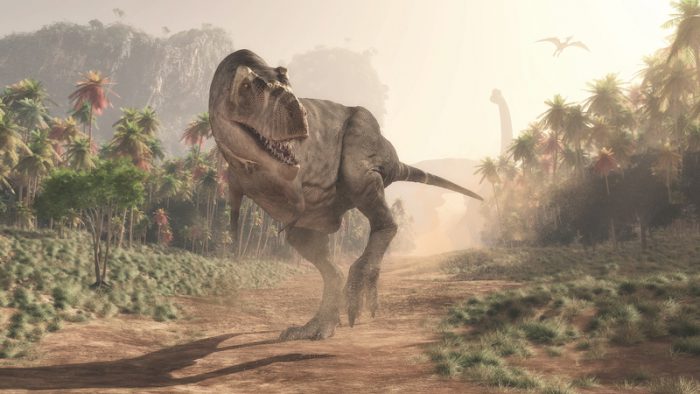Just when you think that you know everything about Tyrannosaurus rex... CRUNCH! New research comes stomping in and makes this mighty dino even more mind-blowing!
Of course, some news — like how T. rex had some feathers — is a little surprising. But in other cases, it totally fits the script. This news falls into that category. According to a new study out of several American universities, T. rex jaws could bite down hard enough to crush a car!
And it could do it without damaging its own skull.
Bone breaker
"I wouldn't do that if I were you..." (Getty Embed)
Of course, there weren't cars back in the Cretaceous period. So just why did the T. rex need this kind of awesome power? Well, these predators did eat a lot of dinosaurs, and this skill made them that much more deadly. Their jaws could crush bone.
Over and over again.
Because when trying to crush bone, you need two things. Lots of physical power for the crushing. And an extremely strong skull so that the force of the bone-breaking bite didn't literally break T. rex's own jaws in the process! How did it work?
Rigid frame
Crocodiles use their rigid jaws to create the strongest bite of any living animal. (Getty Embed)
We already knew that power-wise, T. rex was the champ of chomp. They have been estimated to be have a bite force of 64,000 Newtons. Basically, that is around 7 tons of force, a.k.a. the weight of an elephant. By comparison, the strongest living bite force belongs to a saltwater crocodile, which has only has 16,000 Newtons worth of force.
But as we said, that is just part of the equation. The T. rex needed a super strong skull to pull this bite off. And this study confirms that it had one. Basically, T. rex had a rigid skull. This is different from many reptiles, which have flexible skulls. (In fact, one of the few modern reptiles that don't have flexible skulls? You guessed it: crocodiles!)
This study backs up fossil evidence of T. rex's bone-crushing ways, including split bones with tooth marks and coprolite (or fossilized poop) of T. rex that contains fragments of bone. All we can say it, thank goodness these dinosaurs aren't around anymore — those jaws meant business!
 "So you want to try and hide from me in that car? We'll just see about that!" (© Orlando Florin Rosu - Dreamstime.com)
"So you want to try and hide from me in that car? We'll just see about that!" (© Orlando Florin Rosu - Dreamstime.com)









